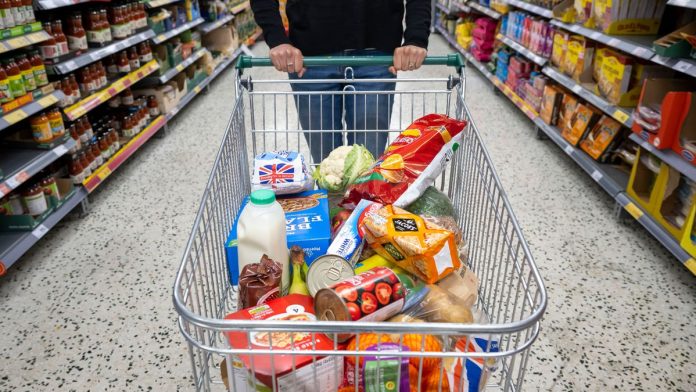Leaving the European Union added an average of £210 to household food bills over the two years to the end of 2021, costing UK consumers a total of £5.8 billion, new research from the Centre for Economic Performance (CEP) at the London School of Economics finds.
And since low-income households spend a greater share of their income on food than richer families, these Brexit-driven price rises had a proportionately greater impact on the poorest people.
A previous report by CEP researchers found that leaving the EU increased the price of food products by six per cent.
The latest study, Non-tariff barriers and consumer prices: Evidence from Brexit – confirms that food prices increased by six per cent and finds that for the poorest households, this feeds through into a Brexit-induced rise in the overall cost of living of 1.1 per cent – 52 per cent more than the 0.7 per cent rise felt in the top 10 per cent of households.
The authors also look in depth at the mechanisms behind the price rises.
The EU is, the researchers point out, a “deep” trading bloc. It goes far beyond the elimination of tariffs within its borders: it also minimises non-tariff barriers (NTB) to trade through, for example, mutual recognition of standards.
While the Trade and Cooperation Agreement, which came into force in January 2021, ensures that trade between the UK and the EU remains tariff-free, it lacks the depth of the EU. This means there are now, post-Brexit, more NTBs between the UK and the EU.
These include new comprehensive customs checks, rules of origin requirements and sanitary and phytosanitary measures for trade in animals and plants.
The authors find that it is these NTBs that have affected prices. The rise in consumer prices was driven only by products with high NTBs and there was no significant rise in prices for products with low NTBS – suggesting that EU exporters and/or UK importers face higher costs due to these new barriers and between 50 per cent and 88 per cent of these costs have been passed on to consumers.
The changes have benefitted domestic producers of food, who now have less competition from European imports. But the gains to domestic firms are outstripped by the loss to domestic consumers by more than £1 billion.
Additionally, unlike regular tariffs, NTBs do not generate any revenue for the government.
Richard Davies, a professor at Bristol University and study co-author, said:
“The UK inflation rate rose above 11 per cent in 2022, the high leaving the EU, the UK swapped a deep trade relationship with few impediments to trade for one where a wide range of checks, forms and steps are required before goods can cross the border. Firms faced higher costs and passed most of these on to consumers.
Over the two years to the end of 2021, Brexit increased food prices by around six per cent overall.”
Nikhil Datta, assistant professor of economics at Warwick University and study co-author, said: “The policy implications are stark: non-tariff barriers are an important impediment to trade that should be a first-order concern, at least on par with tariffs, for policymakers interested in low consumer prices.
“We calculate that Brexit caused a loss of £210 for the average household, or £5.84 billion overall, when looking at its impact on the food market
A Government spokesperson said:
“We recognise that people are struggling with rising prices due to global inflationary pressures here in the UK, EU and across the world, and we are protecting millions of the most vulnerable families with at least £1,200 of direct payments, including £400 per household towards energy costs.
“Our trade agreement with the EU is the world’s largest zero-tariff, zero-quota deal, and by also removing tariffs on £30bn of goods, we are cutting costs and reducing red tape.”







